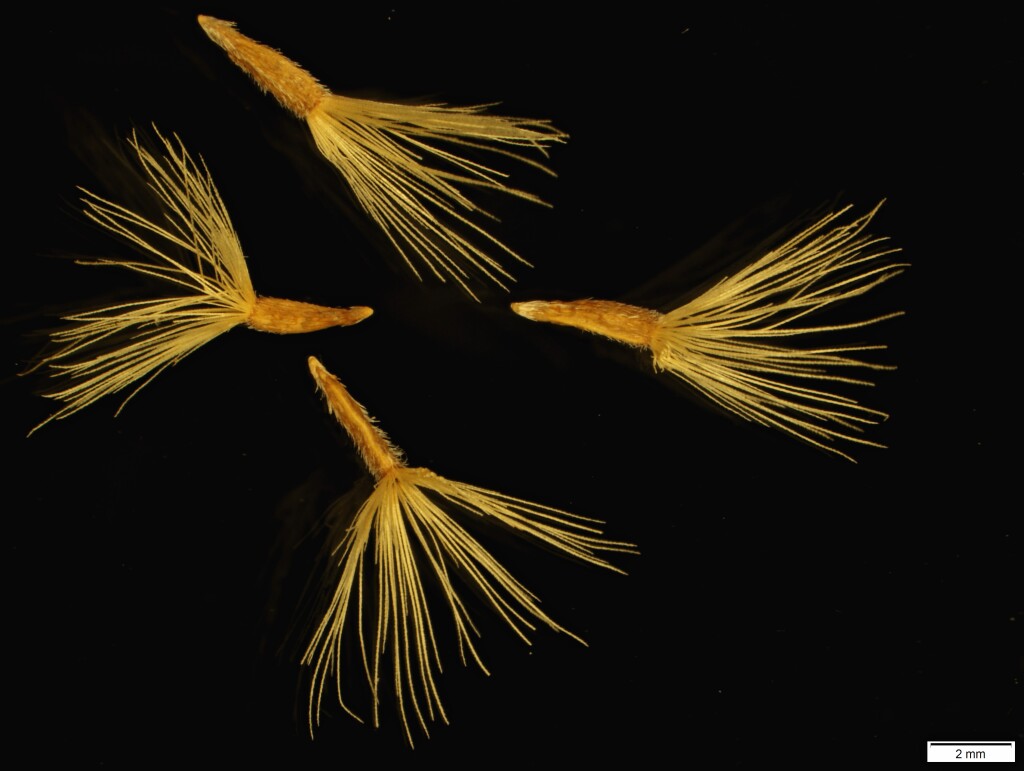Vittadinia pustulata
N.T.BurbAnnual herb or subshrub, to 30 cm high; stems branched above base; stems, leaves and involucral bracts with occasional to dense minute glandular hairs (sometimes absent from involucral bracts) and longer spreading septate hairs. Leaves narrowly oblanceolate to broadly oblanceolate, c. 2–20(–25) mm long, 1–7 mm wide, entire or with up to 3 teeth near apex; apex obtuse or apiculate and recurved. Involucral bracts elliptical, 5–6 mm long; ray florets purple to white, ligules c. 2 mm long. Cypsela oblanceolate, 2.5–4 mm long, flattened, with pustulate swellings towards base; base with dense eglandular appressed hairs; faces with shorter scattered appressed eglandular hairs; pappus bristles barbellate, 5–7 mm long. In Victoria recorded flowering in Sep.
MuM, EGU. Also WA, NT, SA, Qld, NSW. First recorded in Victoria in 2011 and known from only two sites, Pira Bushland Reserve in the north-west and near Suggan Buggan in east Gippsland. At Pira Bushland Reserve it occurs in Callitris gracilis woodland, and near Suggan Buggan it occurs in Eucalyptus albens grassy woodland.
The pustules on the cypselas are unique to this species. The pustules are more visible after soaking the cypselas in water. Burbidge (1982) mentions that they may serve a water absorption function at germination.
 Spinning
SpinningBurbidge, N.T. (1982). A revision of Vittadinia A. Rich (Compositae) together with reinstatement of Eurybiopsis DC. and description of a new genus, Camptacra. . Brunonia 5(1): 1–72.



